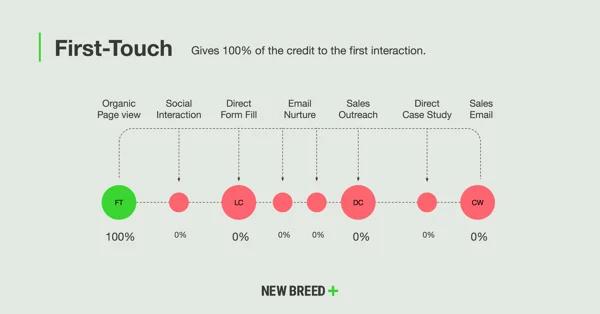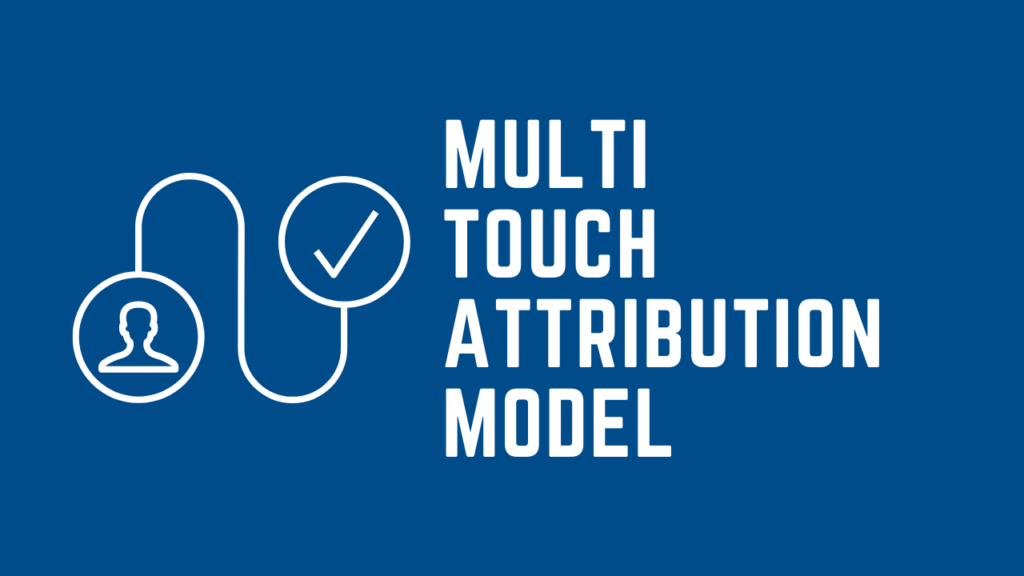As a marketer, you are constantly striving to understand the impact of your marketing efforts and optimize your return on investment (ROI). One of the most effective ways to achieve this is through multi-touch attribution. In this article, we will delve into the world of multi-touch attribution, exploring what it is, why single source attribution is not enough, the different types of multi-touch attribution models, and the benefits of using these models in your marketing strategy.
Table of Contents
What is Multi-Touch Attribution?
Multi-touch attribution is a methodology that allows marketers to assign credit to multiple touchpoints in a customer’s journey, giving them a holistic view of how each interaction contributes to a conversion. Unlike single source attribution, which only attributes the conversion to the last click attribution, multi-touch attribution considers the entire customer journey, from the first touchpoint to the final conversion.
Why Single Source Attribution is Not Enough

Single source attribution, while simpler to implement, fails to capture the complexity of today’s customer journeys. In the digital age, customers interact with multiple touchpoints across various channels before making a purchase decision. By relying solely on the last touchpoint, you are disregarding the impact of other touchpoints that played a crucial role in influencing the customer’s decision.
Types of Multi-Touch Attribution Models
There are several types of multi-touch attribution models, each with its own strengths and weaknesses. The most common models include:
Linear Attribution: This model assigns equal credit to each touchpoint in the customer journey. It provides a fair representation of the contribution of each touchpoint but may not accurately reflect the actual influence of each interaction.
Time Decay Attribution: In this model, the touchpoints closer to the conversion receive more credit than those further back in time. It acknowledges the diminishing influence of earlier touchpoints but may overlook the importance of initial interactions.
Position-Based Attribution: Also known as the “U-shaped” model, this approach assigns 40% of the credit to the first and last touchpoints, with the remaining 20% distributed among the intermediate touchpoints. It recognizes the significance of both the first and last interactions in the customer journey.
Algorithmic Attribution: This model utilizes machine learning algorithms to assign credit to touchpoints based on their actual impact on conversions. It offers a more advanced and accurate assessment of touchpoint influence but requires substantial data and technical expertise.
Understanding the Differences between Single Source Attribution and Multi-Touch Attribution Models
The fundamental difference between single source attribution and multi-touch attribution models lies in the scope of analysis. Single source attribution only considers the last touchpoint, while multi-touch attribution takes into account all touchpoints in the customer journey. By adopting multi-touch attribution, you gain a deeper understanding of the customer’s decision-making process and can make data-driven decisions to optimize your marketing efforts.
Benefits of Using Multi-Touch Attribution Models
Implementing multi-touch attribution models in your marketing strategy offers several key benefits:
1. Holistic View of the Customer Journey
Multi-touch attribution provides a comprehensive understanding of how customers interact with your brand across various touchpoints, enabling you to identify patterns and optimize your marketing mix accordingly.
2.Optimized Resource Allocation
By accurately attributing credit to touchpoints, you can allocate your marketing attribution resources more effectively, focusing on the channels and strategies that drive the most significant impact.
3. Improved ROI
With a clearer understanding of the customer journey and optimized resource allocation, multi-touch attribution helps maximize your marketing ROI by eliminating wasteful spending and driving conversions more efficiently.
Common Challenges and Limitations of Multi-Touch Attribution
While multi-touch attribution is a powerful tool, it also comes with its fair share of challenges and limitations. Some of the common hurdles include:
Data Collection and Integration: Implementing multi-touch attribution requires access to accurate and comprehensive data from various sources. Ensuring data quality and integrating data from disparate systems can be a complex and time-consuming process.
Attribution Complexity: With multiple touchpoints and interactions to consider, determining the exact credit for each touchpoint can be a challenging task. Different attribution models may yield different results, making it essential to choose the most suitable model for your business.
Lack of a Universal Standard: Unlike single source attribution, which provides a straightforward approach, multi-touch attribution does not have a universally accepted standard. Each business must tailor their approach to suit their specific needs and objectives.
Tools and Software for Implementing Multi-Touch Attribution
Several tools and software solutions are available to simplify the implementation of multi-touch attribution. These tools offer features such as data collection, visualization, and modeling, making it easier for marketers to analyze and understand the impact of each touchpoint. Some popular multi-touch attribution tools include:
Google Analytics: Google Analytics provides a range of attribution models and reporting capabilities to help you gain insights into your customer’s journey.
Adobe Analytics: Adobe Analytics offers advanced attribution capabilities, allowing you to create customized models and track customer interactions across different channels.
Marketing Automation Platforms: Many marketing automation platforms, such as HubSpot and Marketo, offer built-in multi-touch attribution functionality, making it seamless to implement and analyze your attribution data.
How to Implement Multi-Touch Attribution in Your Marketing Strategy
Implementing multi-touch attribution in your marketing strategy involves a systematic approach. Here are the key steps to get you started:
Define Your Goals: Clearly define your marketing objectives and the metrics you want to track. This will help you align your attribution model with your business goals.
Choose the Right Attribution Model: Select an attribution model that aligns with your business needs and provides the most accurate representation of touchpoint influence.
Collect and Integrate Data: Gather data from various sources, ensuring its accuracy and completeness. Integrate data from different systems to create a unified view of the customer journey.
Analyze and Optimize: Utilize the insights gained from multi-touch attribution to optimize your marketing efforts. Identify underperforming touchpoints and reallocate resources to maximize impact.
Conclusion and Key Takeaways
Understanding multi-touch attribution is essential for unlocking the full potential of your marketing ROI. By moving away from single source attribution and embracing multi-touch attribution models, you gain valuable insights into the customer journey, optimize resource allocation, and improve your overall marketing effectiveness. While multi-touch attribution may present challenges, leveraging the right tools and taking a systematic approach can help you overcome these hurdles and drive success.
Implementing multi-touch attribution requires careful planning, data integration, and analysis. By following the steps outlined in this article, you can confidently incorporate multi-touch attribution into your marketing strategy and unlock the true power of your marketing efforts.
Key Takeaways
- Multi-touch attribution considers all touchpoints in the customer journey, providing a holistic view of their interactions.
Single source attribution fails to capture the complexity of customer journeys and overlooks the impact of earlier touchpoints. - There are several types of multi-touch attribution models, including linear, time decay, position-based, and algorithmic.
Multi-touch attribution offers benefits such as a comprehensive view of the customer journey, optimized resource allocation, and improved ROI. - Implementing multi-touch attribution comes with challenges, including data collection, attribution complexity, and the lack of a universal standard.
- Tools and software solutions, such as Google Analytics and Adobe Analytics, can assist in implementing and analyzing multi-touch attribution.
 socialhead
socialhead





